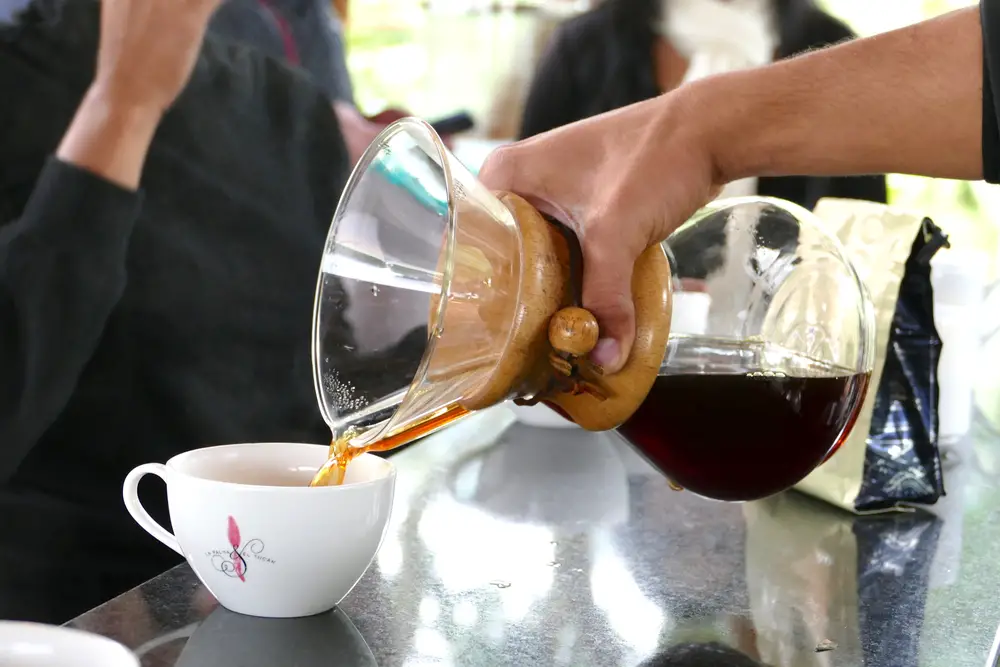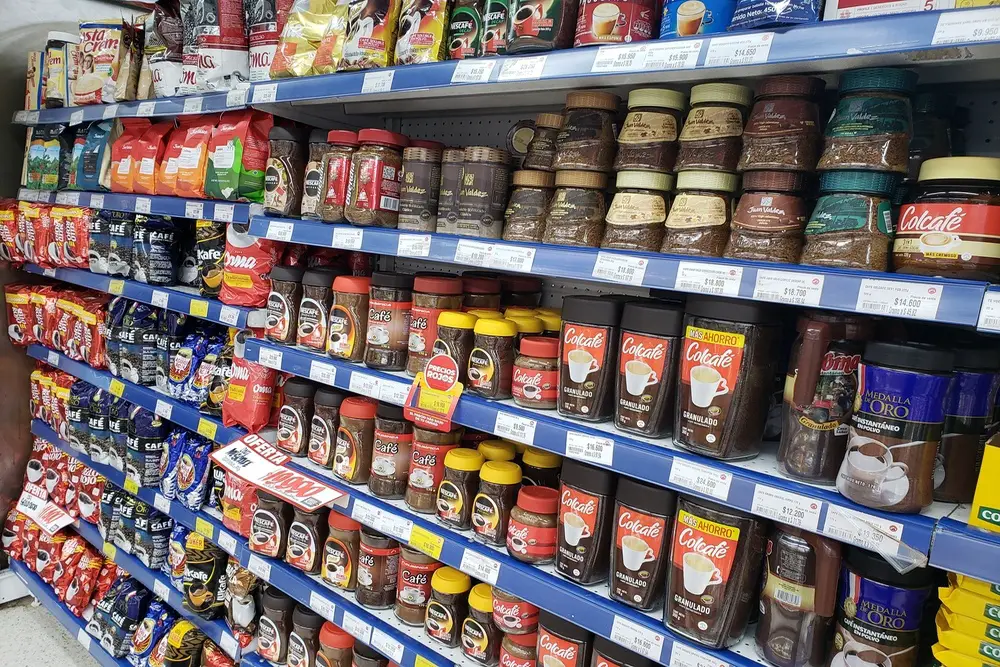Like other East African countries, Tanzania is a producer of excellent quality coffee.
In fact, the coffee produced in this country is considered to be some of the best in the world.
Table of Contents
Brief History of Tanzanian Coffee
The origin of coffee in Tanzania
According to various historians, the people of Tanzania have been using coffee since the 16th century, but not as a drink but as a means of payment.
However, it is known that the Haya tribe already used coffee for chewing, as this is how they achieved its stimulating effect.
This is similar to the American tribes where people chewed coca leaves to stay alert and energetic.
The colonial occupation by the German Reich
Towards the end of the 19th century, the German settlers saw coffee as a product that could be drunk and exported.
It is also said that previously only tribal leaders could authorize the cultivation of coffee trees.
However, the Germans weakened the system that had worked for centuries, and this led to the widespread spread of coffee plantations.
By this time, between 1905 and 1912, coffee production and exports had tripled.
The end of the First World War
A few years later, at the end of the First World War, the colonies of the defunct German Empire passed into the hands of the victors of the conflict (France and Great Britain).
The British took over the Tanzanian coffee plantations, which by 1925 numbered more than 10 million coffee seedlings.
Tanzanian independence and coffee production to this day
Tanzania gained independence from the UK in 1964 and the first Tanzanian cooperative was formed soon after.
This organization was formed to negotiate better prices for growers and later evolved into what became known as the Kilimanjaro Native Coffee Union (KNCU).
The KNCU is considered to be the oldest cooperative in Africa and has most of the coffee farmers in Tanzania as members.
A few decades later, however, the government banned the activity of these cooperatives for political reasons.
Today about 90% of the coffee farms in Tanzania are managed by small farmers and 10% are large plantations.
Characteristics of Tanzanian coffee
The best-known Tanzanian coffee is the Peaberry, an Arabica variant grown at high altitudes (between 1,000 and 2,500 meters above sea level) in the fertile volcanic areas around Mount Meru and Kilimanjaro.
In addition, the classic tropical climate of the green coffee belt, to which Tanzania belongs, is characterized by abundant rainfall and a temperate climate that provides optimal growing conditions for coffee trees.
The result is one of the best Arabica coffees in the world when harvested and processed properly.
This is how this coffee is described with a medium body and a light, evenly penetrating acidity, with many fruity notes.
In addition, Tanzanian coffee is known for its intense and rich flavor that can reveal notes of black currant softened by notes of chocolate that blend together leaving a deep, sweet aftertaste.
Tanzanian coffee cultivation
Many Tanzanian coffee farmers grow coffee alongside other crops such as bananas.
In this way, the larger banana trees provide shelter from the sun for the smaller, shrubby coffee trees.
The banana trees also benefit from the nutrients that the coffee trees leave in the soil, thus maximizing the country’s agricultural production.
On the other hand, the Tanzanian production can be divided as follows:
- About 70% of the coffee belongs to the Arabica variety, which in turn is divided into the sub -varieties Typica, Nyara, Blue Mountain, Bourbon and Kent.
- About 28 to 29% of the coffee belongs to the Robusta variety.
- And only 1 to 2% is made from Liberica beans.
The main coffee-growing regions in Tanzania
The main growing regions for Arabica coffee (the economically most important) are located in:
- North Kilimanjara
- Mbeya
- Matengo highlands
- Mbinga
- Usambara Mountains
- Iringa
- Morogoro
- Cogma
- Ngara
Tanzania, on the other hand, is the fourth largest coffee producer in Africa and ranks 15th in the world.
Tanzania coffee profile
Seasoned coffee tasters often compare Tanzanian coffee to Kenyan coffee, claiming the two are similar in their brisk flavor and pungent, almost vinous acidity (reminiscent of the taste of wine).
East African coffees are said to have a unique taste.
Similarly, Tanzanian coffee is medium to full bodied, which can include notes of cedar in the sweet and fruity flavors, as well as some rustic notes, in addition to the aromas already mentioned.
The latter are slightly stronger and leave a long-lasting aftertaste in the mouth.
In addition, almost all Tanzanian coffee is processed wet, i.e. the beans are freed from the pulp or skin with the help of pulping machines and water, as this additional step leads to better coffee quality.
As with Kenyan coffee, quality is measured by bean size, with AA being the highest grade typical of Tanzanian production.
Roast
Tanzanian coffee is mostly medium roasted, so the aroma is mild but complex at the same time, with sweet and floral components as well as multi-layered notes of citrus, pineapple or coconut.
Peaberry – The best Tanzanian coffee
Peaberry coffee beans are sourced only from whole, green, unroasted, low-moisture beans.
In other words, it is below average humidity, i.e. between 1 and 9%. Other types of coffee have between 10 and 12%.
As such, these peaberry beans are typically separated from other beans and sold at a higher price because their lower moisture content allows for a much more controlled roast.
In addition, peaberry often has a very smooth and delicate flavor with more intense wine notes than other Tanzanian coffees, and those who have tasted it report a velvety, almost syrupy mouthfeel.
Tanzania’s coffee and the political situation
Despite the excellent climatic and geographic conditions directly responsible for the production of excellent quality coffee, Tanzania is only second or third in terms of coffee exports and sales, at least as far as Africa is concerned.
In general, the quality of Tanzanian coffee is not far behind that of some neighboring countries such as Ethiopia or Kenya.
The problem is that Tanzania simply hasn’t lived up to its productive potential, which is why it hasn’t become the coffee power it could be.
This is partly due to government policies that have favored patchy coffee cultivation.
The socialist government that ruled the country from 1964 to 1992 wanted to abolish the traditional colonial-era coffee farms, but failed to help smallholders achieve production competitive in other markets.
In contrast, the neighboring countries of Kenya and Ethiopia have laid solid foundations for coffee cultivation with government support.
In addition, the Tanzanian government banned the cooperatives altogether in 1976, apparently in a populist attempt to gain support from coffee villagers.
The latter had a serious impact on the coffee market as only the coffee farmers with better contacts and connections could be successful.
Meanwhile, other coffee farmers had to focus on other crops as coffee became unprofitable for them.
Other systems that have been very effective in countries like Kenya have not had the same impact in Tanzania.
While efforts have been made to improve the country’s coffee productivity, the largest government investment has gone almost exclusively to peaberry coffee, which eventually makes most of the money.
The problem, however, is that peaberry accounts for only 30% of total production, so the remaining 70% aren’t generating as much profit as they could.
The solution had to come from the coffee farmers themselves
Although the situation is not the best, the small farmers have decided to form small cooperatives that operate in the villages.
In addition, there are other small groups of coffee farmers who have made it their mission to rebuild coffee farms to resume coffee production of yore.
This should also reduce the bureaucratic delays in applying for the necessary permits for coffee cultivation.
These civil initiatives have had an interesting impact as they have enabled the production of different coffee varieties with their own seal, which should improve market opportunities.
However, it cannot be denied that the uncertainty in this sector remains as it is not known what role the government will play in coffee production, i.e. whether it will support or hinder the process.
Processing of Tanzanian coffee
After harvesting, the coffee is processed using two main methods: traditional and non-traditional.
These are described below.
Coffee processing according to traditional methods
Overall, the processing of Arabica coffee in Tanzania almost always follows the traditional method of fermentation and washing, which is classic for small-scale producers.
However, large producers can also use manual methods, albeit to a lesser extent, as they can also work with machines.
In addition, both large and small farmers use centralized wet mills, which are almost always used by cooperatives, exporters or larger farms.
In other words, the different players in the sector share some of the tools needed for coffee production.
Coffee processing with traditional methods
In Africa, however, traditional methods are the most preferred, mainly because they involve lower production costs.
Like Kenya, Tanzania seems willing to invest in technological renewal as this move towards non-traditional or artisan production would certainly increase volumes.
However, non-traditional methods are much more expensive, making them a remote possibility in more than one country in the region.
Tanzanian coffee by region
In this African country, there are 4 main regions where Arabica coffee is grown.
The Northern Region
In the northern areas of the country, on the slopes of Kilimanjaro and Mount Meru, the lightest, sweetest and relatively strong coffee is grown.
For example, coffee production in this region extends from the northwest to Lake Victoria and the city of Tarime, where there is a mill run by a Kenyan company.
Therefore, it is the northern region that produces particularly good coffee. In fact, the peaberry comes from this region.
The Southwest Region
The southwest region is near the town of Mbeya and the coffee from this region is generally marketed under the same name: Mbeya.
In short, this coffee is described as being milder than the coffees from the northern region and is even said to have more floral notes.
The region in the far southwest
In this region of the country, in the extreme south-west between Lake Nyasa and the city of Songea, the coffee is known as Mbinga or Ruvuma.
And like its southwestern counterpart, it also stands out for being a bit milder and perhaps more floral than the coffees of the north.
The Northwest Region
Tanzania’s most renowned Arabica coffees come from this region.
For example, several types of coffee come from near the city of Kigoma, near Lake Tanganyika and the border with Burundi.
However, production in this area has historically been hampered by poor access to transportation, so it has a logistical disadvantage.
However, the coffee from the eastern region has a very similar profile to that from the north, with slightly fruitier notes.



